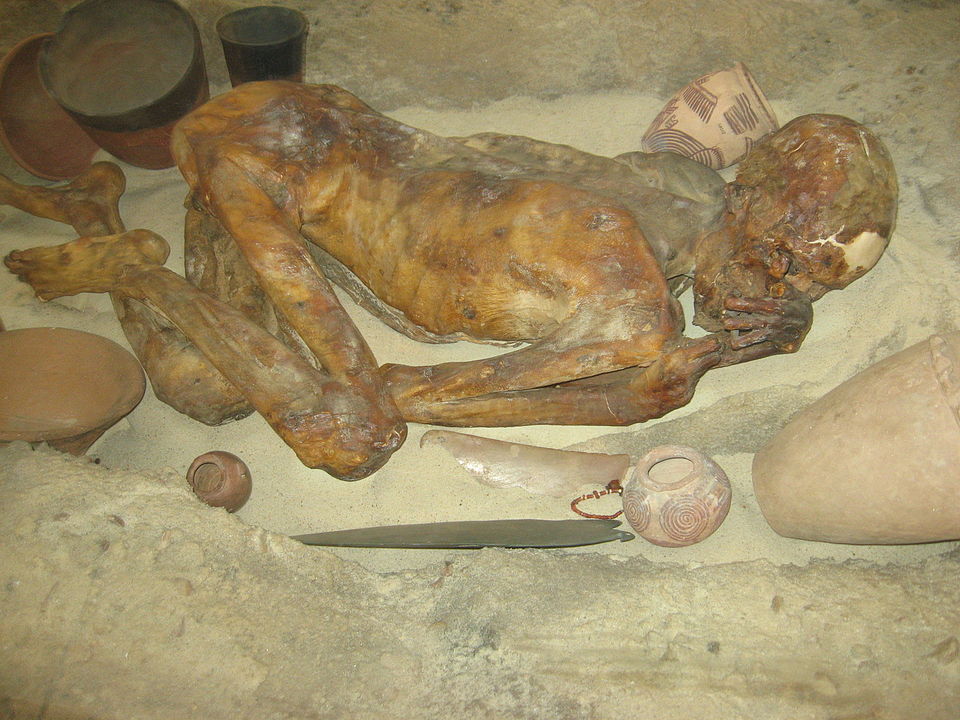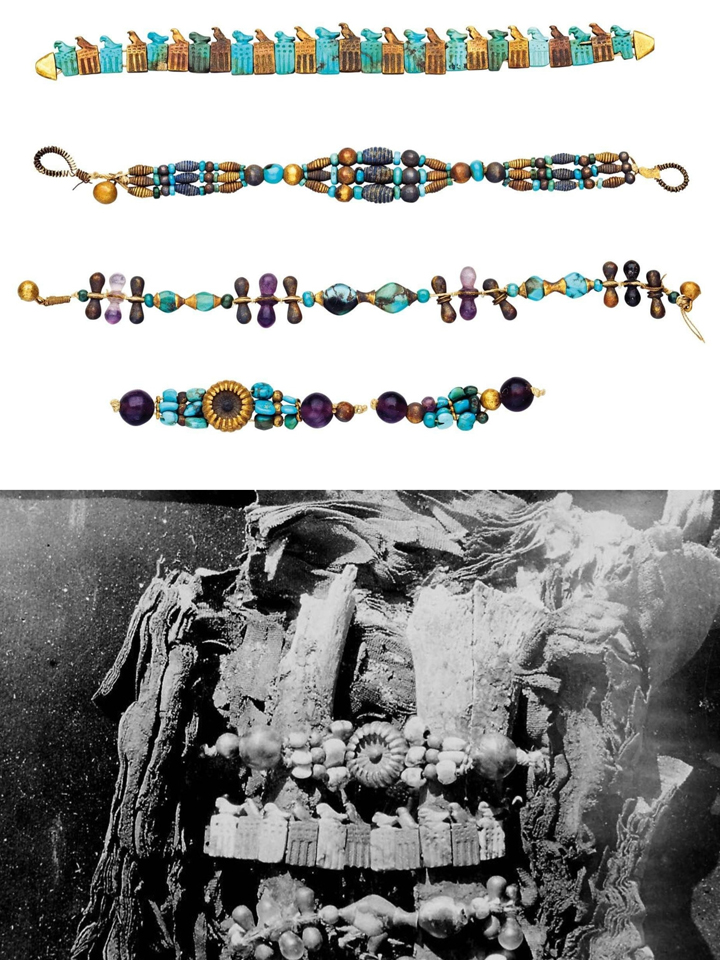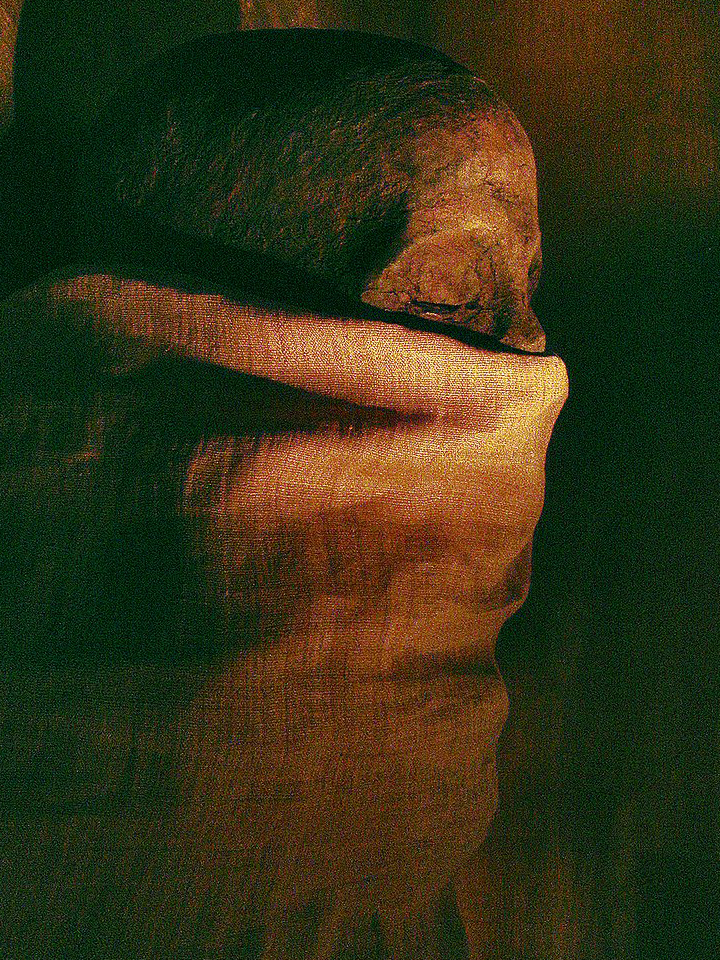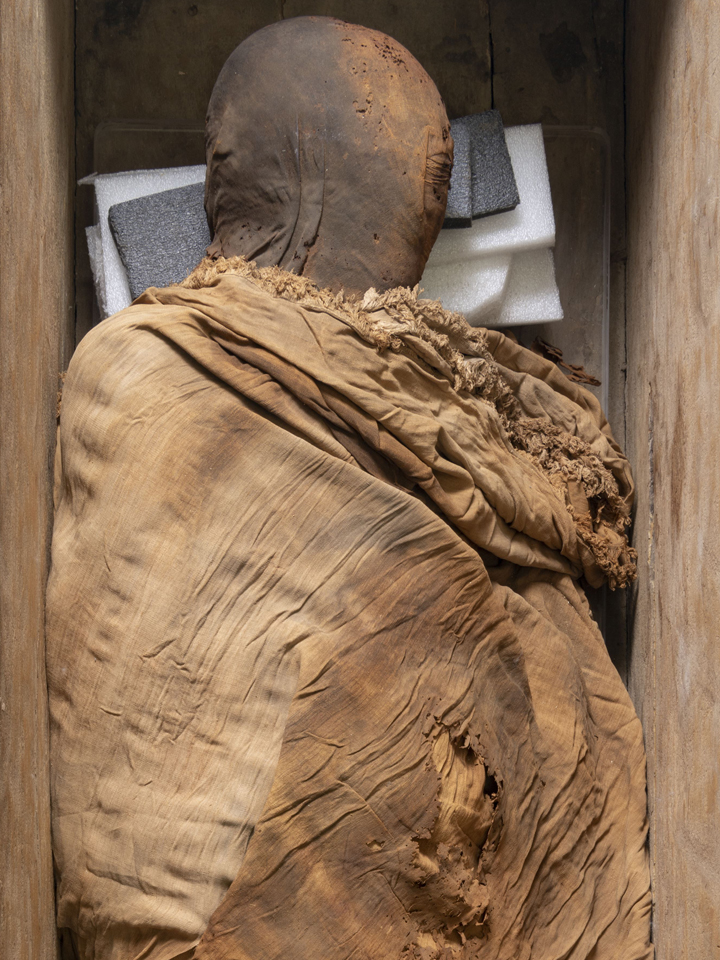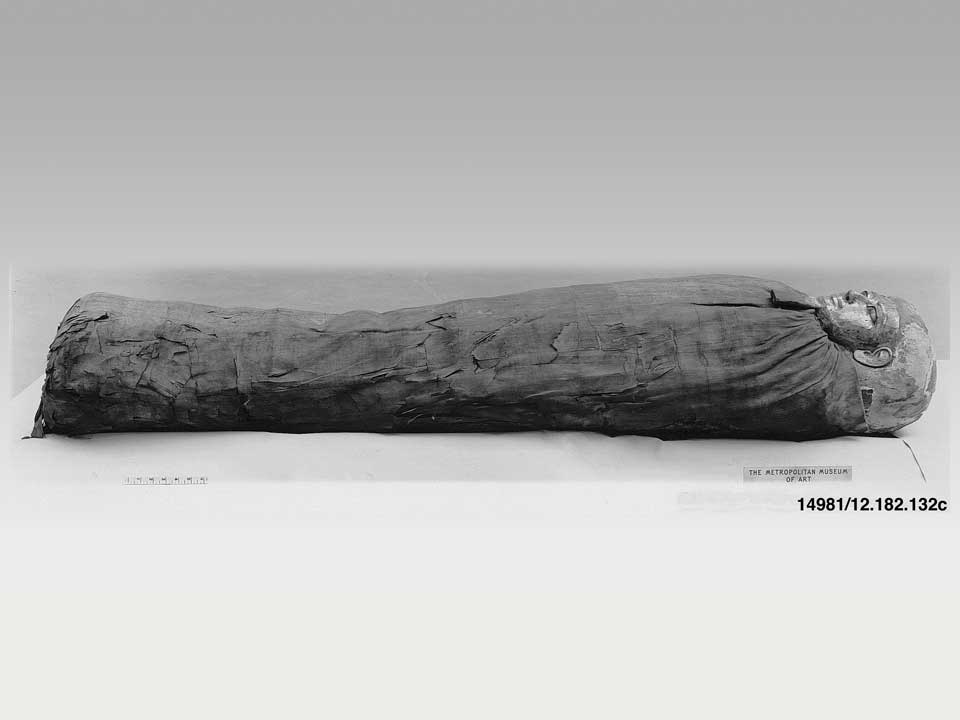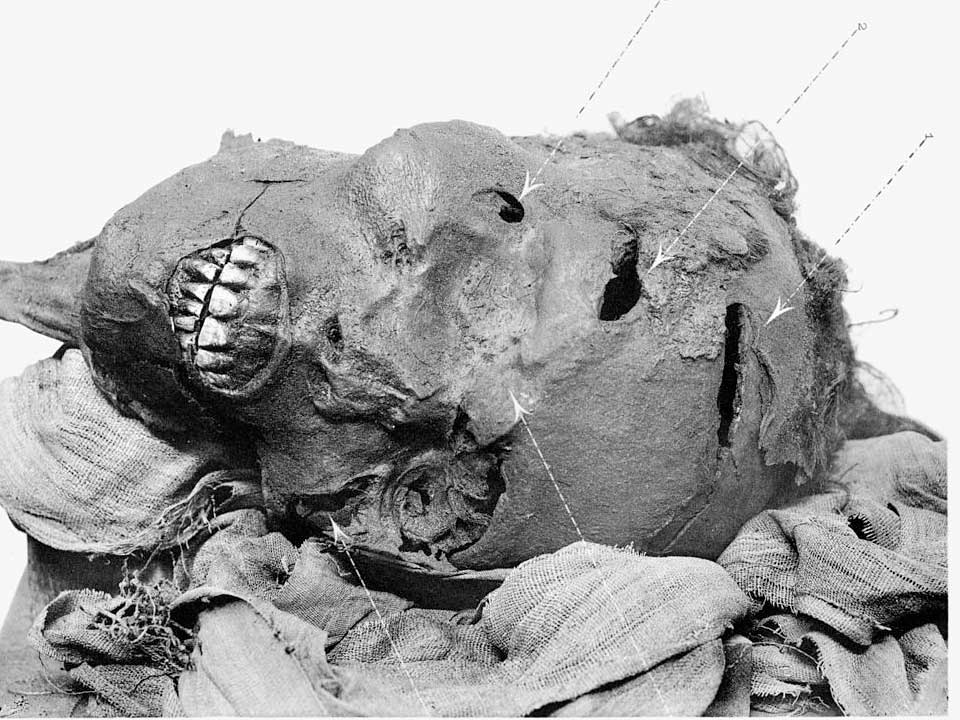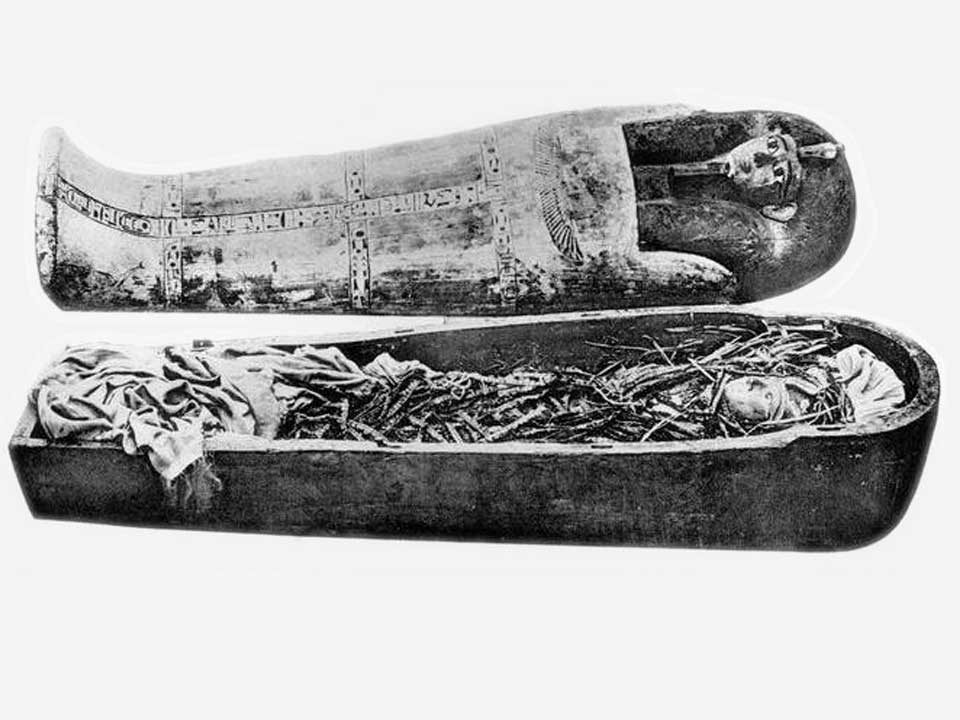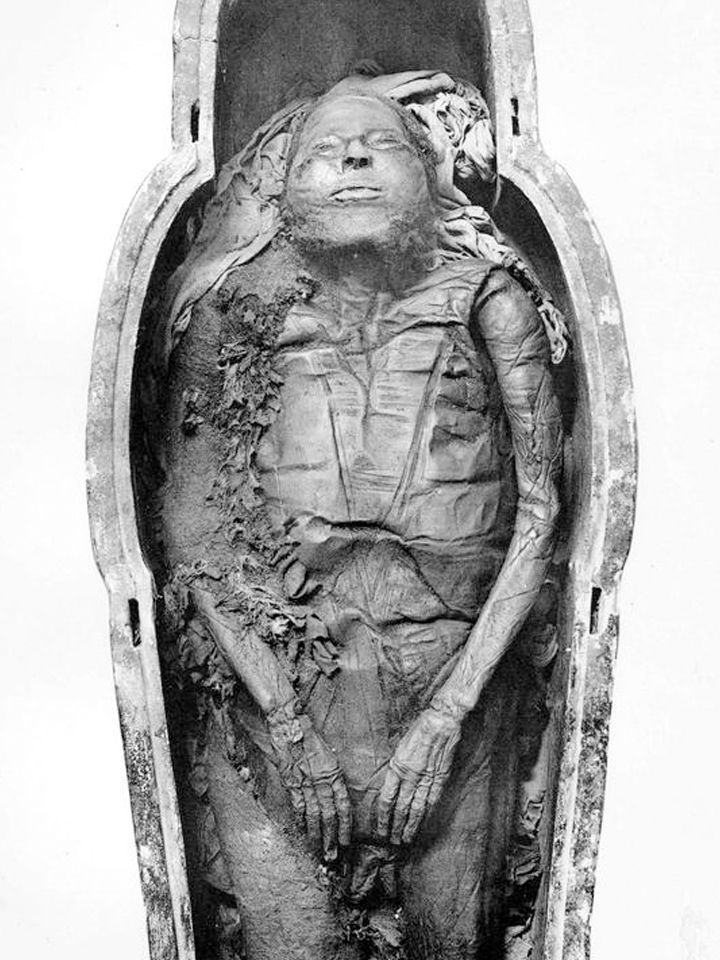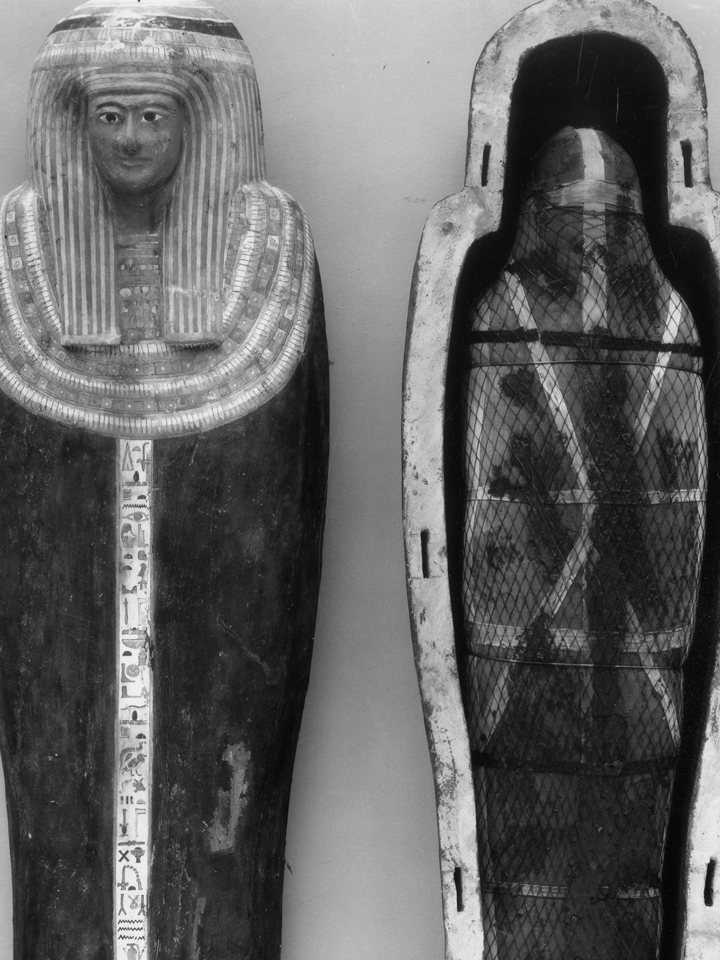Evolution of Mummification
How could a human become a god? If you were Egyptian, you could do it through mummification. After death, your body needed to become a well-preserved statue of itself. Only then could your soul could return to it and traverse the afterlife – and, if you were royalty, claim the godhood that is your birthright.
What began as a natural byproduct of Egypt’s hot, dry climate, became an elaborate, intentional practice, enriched by complex – and at times mysterious – rituals. Much of what we know about the rituals comes from Old Kingdom tomb artwork known as the Pyramid Texts, later sarcophagus artwork, known as the Coffin Texts, and from the New Kingdom’s Book of the Dead, also called the Book of Going Forth By Day.
Egyptologists often rely on the mummies themselves to shed light on the processes that preserved them. Below is a timeline showing the evolution of Egyptian mummification, from sand-pit burials, to the ornate styles that we think of when we think mummy
7-Steps
The spells and rituals that ensured a proper mummification varied over time and region, but generally, they followed these seven steps.
Click on each of the steps below to learn more.

Procession to the Necropolis
To Egyptians, the land of the living was on the eastern side of the Nile River, where the Sun rose, and the land of the dead was to the west, where the Sun set. This first stage formally transported the body to the land of the dead via a papyrus ship.
In 1954, Egyptian archaeologist Kamal el-Mallakh uncovered one of these funerary barges. Buried with the pyramid-builder, Khufu, it has since been fully reconstructed and is now on display in the Grand Egyptian Museum.
Procession to the Embalming Place
Upon arrival on the western bank, the deceased was carried to the “god’s booth”, the place where the body would be embalmed. They were accompanied by a priest, two women mourners, and nine pallbearers. The pallbearers carried the body, as well as grave goods, or objects of ritual significance that will be buried with the dead.
Embalming and Mummification
In total, mummification took 70 days. Three days were spent purifying the body, then the focus shifted to anointing the body with various oils, placing magical amulets, reciting spells, and ultimately wrapping the body. The actual process of embalming, as well as the materials used, varied depending on the time period.
Post-Embalming Rituals
After the body was fully mummified, further spells were put in place to protect the deceased. Because the process of mummification turned the body into a symbol of the god Osiris, some spells involved wards against the god Set. In Egyptian mythology, Set killed Osiris to claim the throne of Egypt, only for the goddess Isis to perform the first mummification and resurrect him.
Procession to the Tomb
When it came time for the deceased to be taken to their tomb, they were transported on a cattle-driven sled. Friends, relatives, nobles, and other mourners – the unofficial kind – walked alongside them. Once again, the body was attended by a priest and official mourners, and grave goods were carried, this time to their final resting place.
Opening of the Mouth Ceremony
Perhaps one of the most important ceremonies in an Egyptian’s life (well, afterlife), the Opening of the Mouth ritual dates back as early as the 4th Dynasty. The purpose was to ensure that the dead could speak in the afterlife. This was particularly important to the soul’s journey in the underworld, called the Duat.
After death, the deceased would stand before Osiris and have their heart weighed against the feather of truth, the symbol of the goddess Ma’at. They would have to defend themselves against an onslaught of questions from various gods and spirits, and if they were caught in a lie, or found to be unworthy, their heart – effectively their eternal soul – would be fed to the Ammut beast. If they passed inspection, they could proceed into the afterlife. This judgement is depicted in the replica papyrus on exhibit at the Museum of History.
To ensure this could happen, a priest would symbolically “open the mouth” by presenting specific tools to the face. Only then could the soul reenter the body and be able to speak. The ritual was declared finished when the mummy was placed in their tomb and offerings were made to the gods.
Mortuary Service
Once the body was embalmed, the mouth was opened, and the tomb was closed, there were still regular rituals that needed to be completed. Ideally, these would have been undertaken every day by the deceased’s son – in the same way that Horus, Osiris’ son, would have attended to his father. However, in the case of many royals, they would delegate this task to paid individuals.
Evolution of Egyptian Mummification
c. 4300-3100 BCEPre-Dynastic
c. 3100-2675 BCEEarly Dynastic
c. 2675-2130 BCEOld Kingdom Mummification
c. 2130-1980 BCEFirst Intermediate
c. 1980-1630 BCEMiddle Kingdom Mummification
c. 1630-1539 BCESecond Intermediate Period Mummification
c. 1550–1077 BCENew Kingdom Mummification
c. 1070-664 BCEThird Intermediate Period Mummification
c. 713 BCE - 641 CELate Period, Greek, and Roman Egypt



